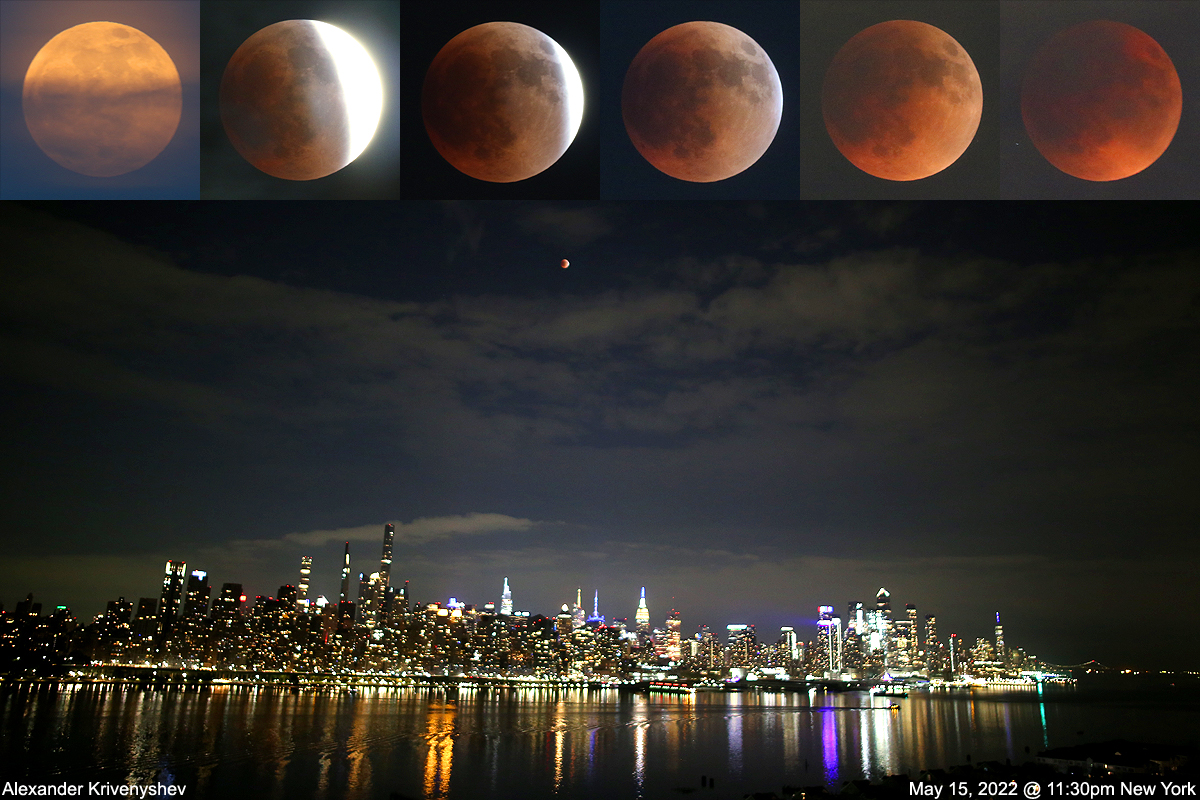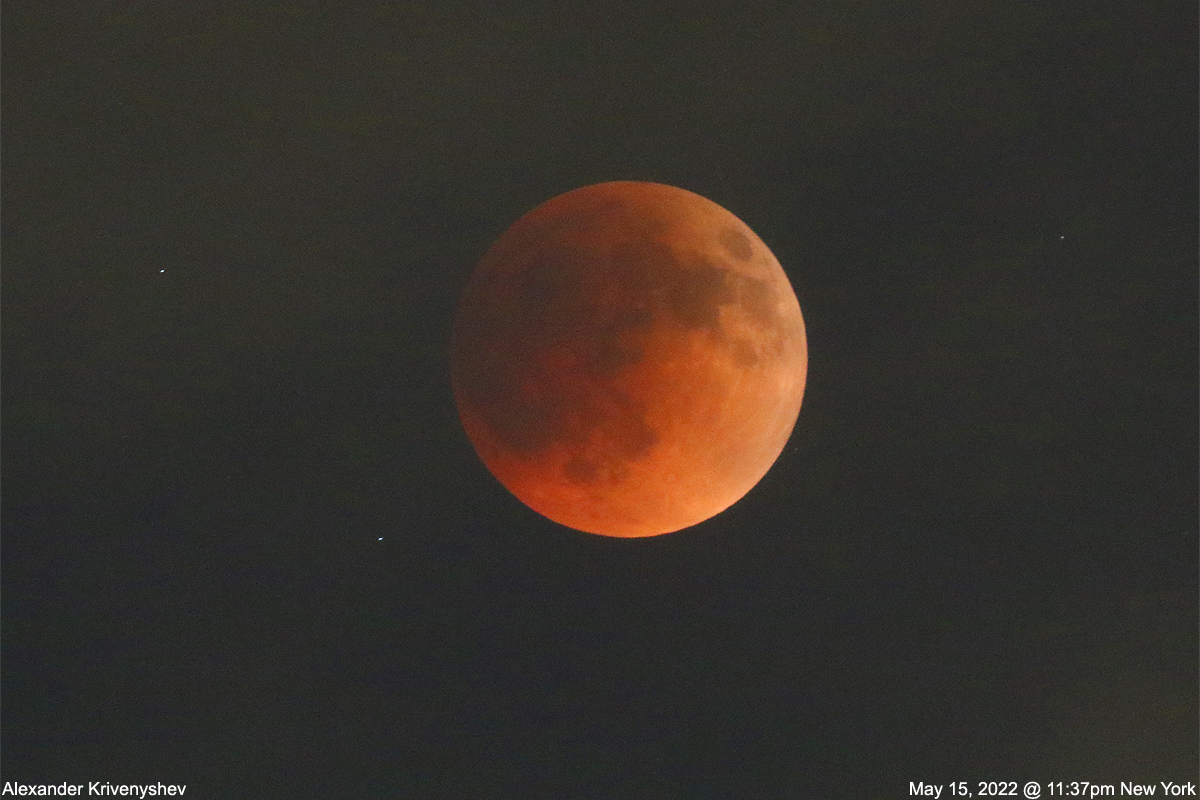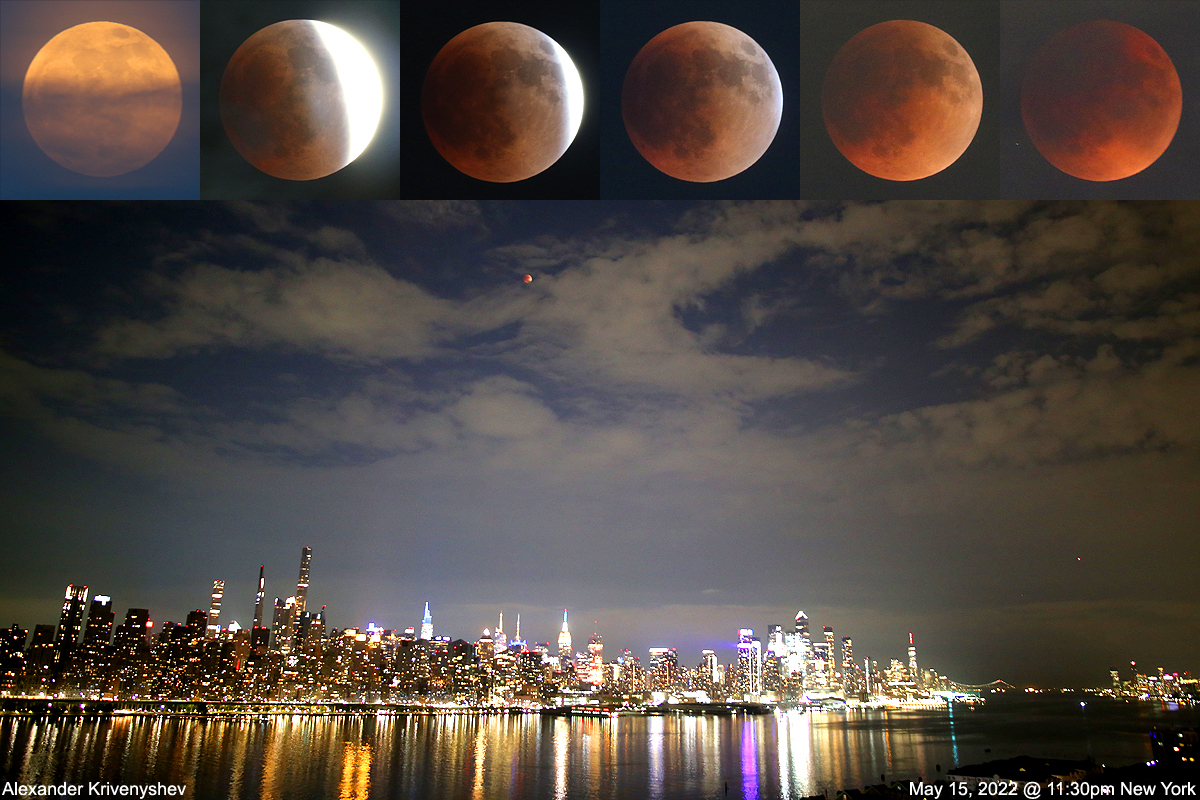

Looking for a telescope for the next lunar eclipse? We recommend the Celestron Astro Fi 102 as the top pick in our best beginner's telescope guide.
The eclipsed moon burns red high above the bright lights of New York City in gorgeous photos captured by amateur astronomer Alexander Krivenyshev.
Krivenyshev, the president of WorldTimeZone.com, snapped images of the total lunar eclipse on Sunday night (May 15) from Guttenberg, New Jersey, which is across the Hudson River from the Big Apple.
He persevered through cloudy conditions, Krivenyshev told Space.com via email, to get shots of the blood-red moon shining like a beacon in a light-polluted sky.
Related: Amazing photos of the Super Flower Blood Moon of 2022

The eclipse began at 9:32 p.m EDT on Sunday (0132 GMT on May 16) when the moon nosed into the light part of Earth's shadow, known as the penumbra, and ended five hours later. The total eclipse phase, in which the moon was completely darkened by Earth's heavier umbral shadow, lasted 85 minutes, the longest of any lunar eclipse in 33 years.
Earth's nearest neighbor temporarily turns a coppery red during total lunar eclipses. This "blood moon" effect is caused by Earth's atmosphere, which bends some red light onto the lunar surface while scattering away shorter-wavelength light. (No sunlight is hitting the moon directly at this point, of course; Earth is blocking the sun from the moon's perspective.)

Last weekend's sky show was best observed from the Americas and parts of Western Europe and West Africa. It was the first total lunar eclipse of the year, but it won't be the last; another one will occur on Nov. 8. The Nov. 8 lunar eclipse will be best observed from Australia, eastern Asia and the western United States.
Get the Space.com Newsletter
Breaking space news, the latest updates on rocket launches, skywatching events and more!
If you're hoping to photograph the moon, or want to prepare for the next total lunar eclipse, check out our best cameras for astrophotography and best lenses for astrophotography. Our guides on how to photograph a lunar eclipse, and how to photograph the moon with a camera, also have some helpful tips to plan out your lunar photo session.
Editor's Note: If you snap an amazing lunar eclipse photo (or your own eclipse webcast) and would like to share it with Space.com's readers, send your photo(s), comments, and your name and location to spacephotos@space.com.
Mike Wall is the author of "Out There" (Grand Central Publishing, 2018; illustrated by Karl Tate), a book about the search for alien life. Follow him on Twitter @michaeldwall. Follow us on Twitter @Spacedotcom or on Facebook.
Join our Space Forums to keep talking space on the latest missions, night sky and more! And if you have a news tip, correction or comment, let us know at: community@space.com.

Michael Wall is a Senior Space Writer with Space.com and joined the team in 2010. He primarily covers exoplanets, spaceflight and military space, but has been known to dabble in the space art beat. His book about the search for alien life, "Out There," was published on Nov. 13, 2018. Before becoming a science writer, Michael worked as a herpetologist and wildlife biologist. He has a Ph.D. in evolutionary biology from the University of Sydney, Australia, a bachelor's degree from the University of Arizona, and a graduate certificate in science writing from the University of California, Santa Cruz. To find out what his latest project is, you can follow Michael on Twitter.









